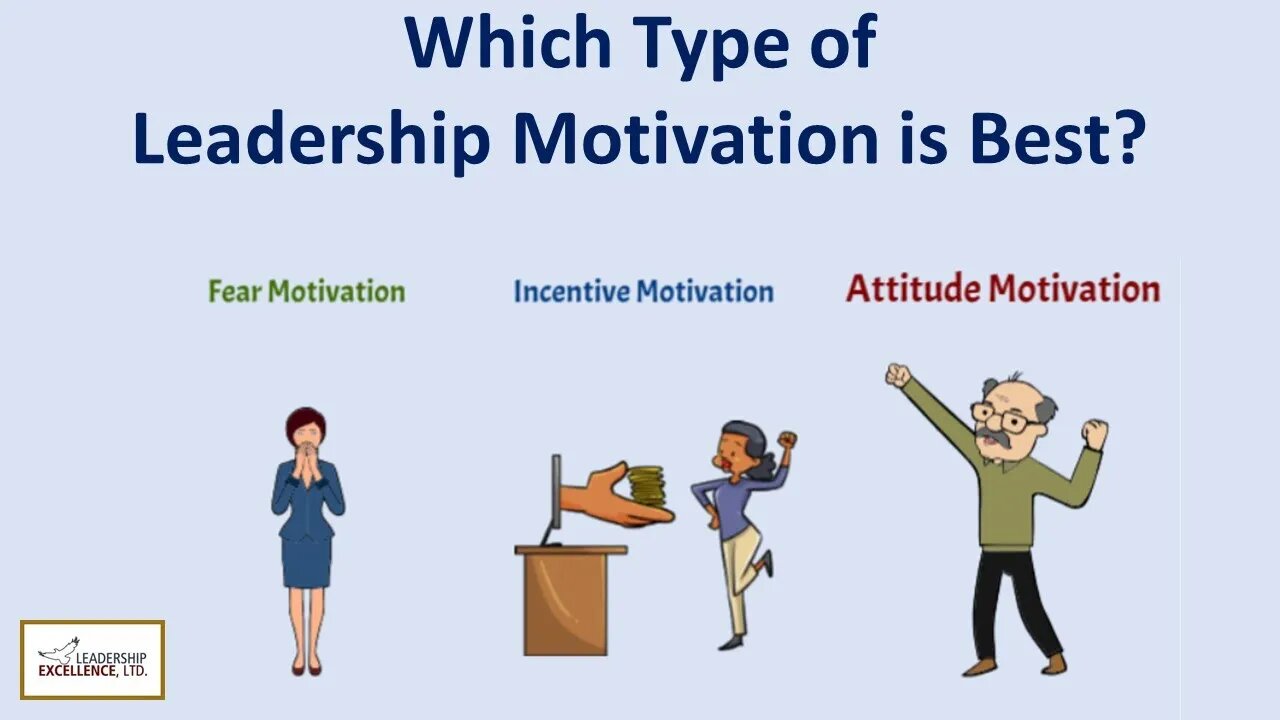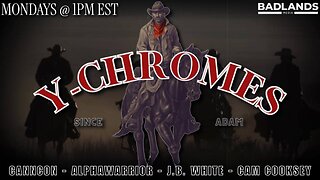Premium Only Content

Which Type of Leadership Motivation is Best?
website: https://leadershipexcellencenow.com
Contact Greg: coach@leadershipexcellencenow.com
An Introduction to Servant Leadership: https://youtu.be/s6L_-_2QNLQ
One of the primary roles of a productive leader is to learn how to motivate people. The word “motivation” is a combination of two words… motive and action. It is the reason why we take action or movement. There are actually 3 primary ways to motivate others. One of the three… is simply the best because it works long-term, and allows individuals to personally reach a higher level. As a leader you need to be aware of these three types of motivation… and understand the differences between them. Let’s discuss this today…
The first and most common type of human motivation is fear. Fear is a strong emotion caused by the anticipation or awareness of danger, or the loss of something considered important. In the workplace… fear can be felt from something as simple as correction, to ultimately something as harsh as termination. The truth is… fear motivation is the least effective form of motivation. First, there must be a continual external force generating the fear within the individual. If the external force relents or stops… the fear generated within the individual slowly declines. Secondly, fear primarily motivates the individual to maintain the minimum expectation of achievement to remain in harmony with the person whose power or position is generating the fear. People don’t perform to their highest… they simply perform to comply. Thirdly, over time people develop an immunity to constant fear… they get to a point where they no longer care, or become emotionally deadened to the threat and therefore the fear no longer works effectively. An example of this can be seen in the attitudes of hardened criminals, or so-called “lifers” in various prisons. Virtually no level of threat, or punishment induces fear in them any longer. Fear doesn’t allow people to grow and reach their potential.
The second type of motivation works far better than fear, but it also requires an external motivator. This is incentive motivation. This type of motivation offers a reward, bonus, promotion or other kind of incentive to produce the desired results in an individual… but it is effective only to a point. In time… the incentive becomes an expectation or considered a minimum reward. For example, if you give someone a $1000 bonus last year, but a $750 bonus this year… the individual may feel they worked just as hard, and are not as appreciated or recognized for their present performance as they were in the past. In this case, the bonus has become a disincentive. Also, in time you run out of escalating levels of money, rewards or promotions to offer.
Putting these two types of motivation together… you come to the “classic” carrot and stick scenario. The carrot symbolizes applying the incentive motivation and the stick symbolizes applying the fear motivation. In leadership training, the “donkey and cart” analogy is often used to teach the difference. If you want to have the donkey perform the work of pulling the cart, you have two approaches. If you place a big juicy carrot on a stick hanging just in front of the donkey, and let him occasionally get a bite out of it you have incentive motivation. The donkey will pull the cart seeking the incentive until it is gone, or the donkey becomes full and loses desire. On the other hand, if you take the stick and whip the donkey’s backside… you have fear motivation. The donkey will pull the cart responding to the pain until its backside becomes numb, or it no longer cares. Then it will just rebel and standstill.
The third and best form of motivation is “attitude” motivation. This type of motivation is more effective because it is internal and not externally produced like the others. The individual is motivated because they “want to.” Their motivation comes from a personal desire to be part of something they love, and enjoy. This individual finds purpose and excitement in the role they fill, or duty they perform. They thrive in an environment that encourages respect, growth, productivity and personal fulfillment. Instead of being treated like donkeys, they are valued like potential thoroughbred champions.
As a leader, it is important to know the difference between the three major types of motivation. You can attempt to externally provide merely fear… or incentives… to motivate your co-workers, or you can learn to also take another… far more powerful approach. You can use your leadership example, and your skills… to encourage and inspire “attitude” motivation in your team members. Your caring behavior, praise of their labors, optimism, and extraordinary enthusiasm for the mission will help to stimulate “attitude motivation” within your team.
-
 19:14
19:14
Clownfish TV
9 hours agoCNN is in Hospice! Mainstream Media BEATEN by Social Media!
1.04K3 -
 1:29:37
1:29:37
MTNTOUGH Podcast w/ Dustin Diefenderfer
3 hours agoPhilip Winchester on Mental Toughness, Discipline, and Hollywood Grit | MTNPOD #121
431 -
 1:06:04
1:06:04
Timcast
2 hours agoU.S. FAILED To Destroy Iran's Uranium, Russia Warns Iran WILL GET NUKES, WW3
147K210 -
 1:50:45
1:50:45
Steven Crowder
4 hours ago🔴 America Bombed Iran... Is a Regime Change War Next?
344K247 -
 1:12:37
1:12:37
The Rubin Report
4 hours agoIs This What Caused Trump to Bomb Iran’s Nuclear Sites Now?
51.6K54 -
 LIVE
LIVE
Badlands Media
10 hours agoY-Chromes Ep. 38
1,645 watching -
 1:16:03
1:16:03
Rebel News
1 hour agoRebels in Ireland, Canada calls for Iran/US peace, Too hot for pools in Toronto | Rebel Roundup
12.9K6 -
 DVR
DVR
Flyover Conservatives
13 hours agoWho is Running the World? 76 NGOs that have Complete Immunity and are Robbing YOU Blind | Mel K
26.7K2 -
 31:47
31:47
Neil McCoy-Ward
2 hours ago🚨 This Is VERY VERY Bad… (It's Happening)
11.3K2 -
 1:14:55
1:14:55
The Mel K Show
2 hours agoMORNINGS WITH MEL K - The Dismantling of the International Banking Cartel & The Hidden Hands of Global Tyranny 6/23/25
22.3K14